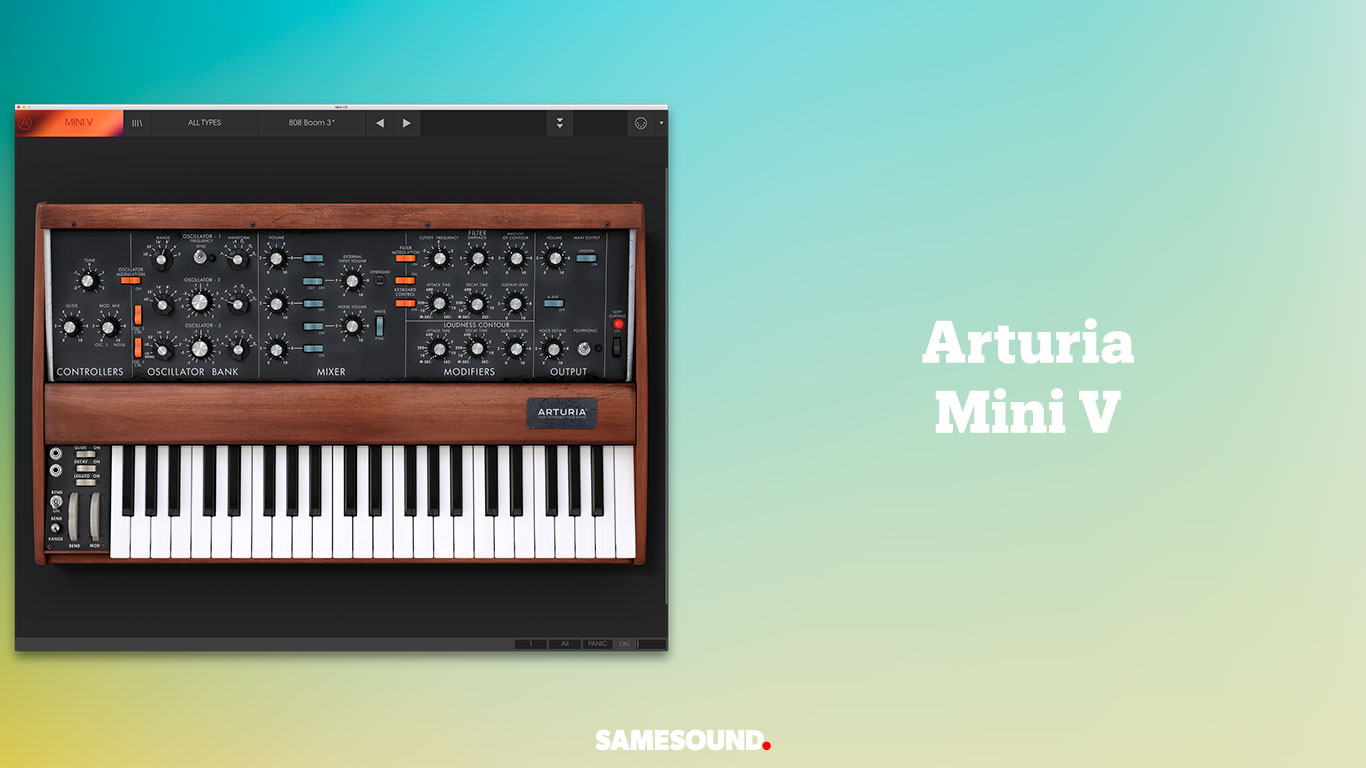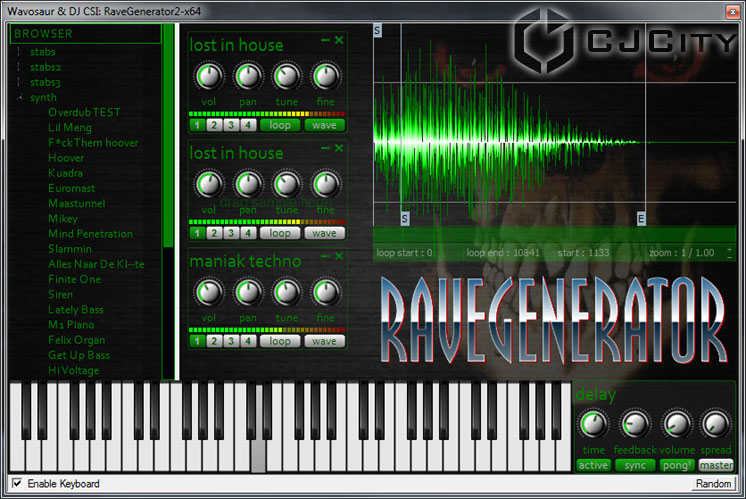
Samij Luchshij Virtualjnij Sintezator Korg
Brand Categories Korg Keyboards and Synthesizers Korg Tuners Korg Effects Korg PA Systems Korg Digital Pianos Korg Accessories Korg Metronomes Korg Drum Machines Korg Percussion Korg Mixers Customer Kudos 'zZounds has always treated me well and if. KORG Gadget for Nintendo Switch. MUSIC PRODUCTION STUDIO. Polysix for Reason. Mono/Poly for Reason. MOBILE SOUND MODULE. KORG ELECTRIBE Wave. MUSIC PRODUCTION MACHINE. KORG Module Standard for iPhone. MOBILE SOUND MODULE. Home Produkte Synthesizer / Keyboards.
Contents. Firmware At the end of Q3 2008, Korg released a major update to the M3's operating system, which changes the unit to the 'M3 XPanded'. This update refines many of the functions of the M3, makes minor changes to the, adds four additional sample libraries including a grand piano (EX-USB-PCM03) library, two brass and woodwind libraries (EX-USB-PCM01 & EX-USB-PCM02), a stereo grand piano (EX-USB-PCM04) library, and updates the KARMA to version 2.2 Kay Algorithmic Realtime Music Architecture developed by Stephen Kay (see: ). Korg Komponent System Korg Komponent System is a unique modular keyboard system devised by Korg that allows the keyboardist to configure their M3 in a multitude of ways. With three different keyboard options Korg explains the system like this: The 61-key model lets you mount a analog modeling synthesizer instead of the M3-M sound generator, the 73-key model lets you mount the M3-M together with a RADIAS-R analog modeling synthesizer, and the 88-key model supports the combination of M3-M and RADIAS-R or even mounting two M3-M units simultaneously.
Of course you can detach the M3-M sound generator and use it as a sound module, giving you great flexibility for constructing the system you need whenever you want. The largest criticisms of the Komponent system are:. Korg seems to have abandoned the idea as only 2 modules (M3 and Radias) were Komponent compatible.
Korg will not sell the keybeds separately. If you bought the M3 as a module, you cannot buy a 61, 73, or 88 key keybed except for on the used market.
Korg has released keyboards since the M3 and none take advantage of the Komponent system. Korg M50. Korg M50 In 2008, Korg unveiled a new, stripped-down version of the M3, the Korg M50. It runs on the same EDS sound system as the M3, but it has less polyphony, no support for expansion cards and no sampling capabilities. Korg M50 also lacks Karma engine but it still can be used if bought separately and installed on computer. The 88-key version, which featured the RH3 graded hammer-action piano keys, is the lightest 88-key keyboard Korg has ever made. Notable Users.
of. See also. References.
| Keio Electronic Laboratories | |
| Industry | Electronics, Musical Instruments |
|---|---|
| Founded | 1962; 57 years ago (as Keio Electronic Laboratories) |
| Founder | Tsutomu Kato Tadashi Osanai |
| Headquarters | Inagi, Tokyo, Japan |
| Products | Keyboards, electronic organ |
| Subsidiaries | Vox |
| Website | www.korg.com |
Korg Inc. (株式会社コルグKabushiki-gaisha Korugu), founded as Keio Electronic Laboratories, is a Japanese multinational corporation that manufactures electronicmusical instruments, audio processors and guitar pedals, recording equipment, and electronic tuners. Under the Vox brand name, they also manufacture guitar amplifiers and electric guitars.
History[edit]
Korg was founded in 1962 in Tokyo by Tsutomu Kato and Tadashi Osanai as Keio Gijutsu Kenkyujo Ltd..[1][2] It later became Keio Electronic Laboratories (京王技術研究所) because its offices were located near the Keio train line in Tokyo and Keio can be formed by combining the first letters of Kato and Osanai. Before founding the company, Kato ran a nightclub. Osanai, a Tokyo University graduate and noted accordionist, regularly performed at Kato's club accompanied by a Wurlitzer Sideman rhythm machine. Dissatisfied with the rhythm machine, Osanai convinced Kato to finance his efforts to build a better one.[3][4]
The company's first product was an electro-mechanical rhythm device, the Disc Rotary Electric Auto Rhythm machine, Donca Matic DA-20, released in 1963.[2] The name 'Donca' was an onomatopoeic reference to the sound the rhythm machine made. Buoyed by the success of the DA-20, Keio released a solid-state version of the Rhythm machine, the Donca matic DE-20, in 1966.
In 1967, Kato was approached by Fumio Mieda, an engineer seeking to build keyboards. Impressed with Mieda's enthusiasm, Kato asked him to build a prototype, and 18 months later Mieda returned with a programmable organ. Keio sold the organ under the name KORG, created by using the first letter of each founder's name plus 'RG' from their planned emphasis on products targeted for the organ market (emphasizing the letters R and G in the word 'organ').[3]
(1970)
(1972)
(1974)

(1977)
Keio's organ products were successful throughout the late 1960s and early 1970s. Concerned about competition from other organ manufacturers, Kato decided to use the organ technology to build a keyboard for the then-niche synthesizer market. Keio's first synthesizer, the Korg miniKORG, was released in 1973.
During the 1970s, Korg's synthesizer line was divided into instruments for the hobbyist, and large expensive patchable instruments such as the PS series. In the early '80s, Korg branched into digital pianos. Roland pc 60.
Anketa dlya polucheniya vida na zhiteljstvo v latvii obrazec zapolneniya. Korg is credited with a number of innovations. The 'key transpose' function was Kato's idea after a singer at his club needed her accompaniment played in a lower key, which the accompanist wasn't able to do. Korg was the first company to feature effects on a synthesizer, and the first to use a 'sample + synthesis' sound design. The M1 workstation, released in 1988, sold over 250,000 units, making it the bestselling synthesizer ever at that time.[3]
In 1989, Korg recruited the design team from Sequential Circuits as they were relieved of their duties by then-Sequential owner Yamaha. Yamaha Corporation has always been a major partner of Korg, supplying them with circuitry and mechanical parts. In 1987, shortly before the release of the M1 Music Workstation, Yamaha acquired a controlling interest in Korg. The takeover of the company was amicable, with Kato drawing up the terms, and the two companies continued to independently develop their product lines and compete in the marketplace. After 5 successful years, Kato had sufficient funds to repurchase most of the Yamaha share in 1993.
Korg has since diversified into digital effects, tuners, recording equipment, electronic hand percussion, and software instruments.[5][6] In 1992, Korg acquired Vox, then primarily a manufacturer of guitar amplifiers.[7] Korg was the exclusive distributor of Marshall Amplification product in the US for decades. This arrangement ended in 2010.[8]
Kato died of cancer on March 15, 2011.[9]
Products[edit]
See also[edit]
References[edit]
- ^'L'Histoire de Korg'. Musicarius [le blog].
- ^ ab'The History Of Korg: Part 1'. www.soundonsound.com. Retrieved 2019-07-04.
- ^ abcJulian Colbeck, Keyfax Omnibus Edition, MixBooks, 1996, p. 52. ISBN978-0-918371-08-9
- ^File:MiniKORG700S (1974).jpg
- ^'The History Of Korg: Part 2'. www.soundonsound.com. Retrieved 2019-07-04.
- ^'The History Of Korg: Part 3'. www.soundonsound.com. Retrieved 2019-07-04.
- ^Dave Hunter, '50 Years of Vox[permanent dead link]' , Vintage Guitar, June 2010
- ^Gordon Reid, '40 Years of Korg Gear' , Sound On Sound, Oct 2002
- ^'Korg Mourns the Passing of Chairman Tsutomu KatohArchived 2011-09-09 at the Wayback Machine', Keyboard Magazine, March 15, 2011
External links[edit]
- 'Korg Sound Make Up Museum' (in Japanese). Korg.Cite web requires
website=(help) - Korg home page (US / UK / Australia / Japan)
- korgaseries.org - A decade old online resource hosting photos, product info, effects, mailing list and manuals for Korg's A1, A2 and A3 effects processors.
- Audio interview with Mitch Colby - EVP / CMO of Korg USA[permanent dead link]
- NAMM Oral History Interview Tsutomu Katoh discusses his favorite of his many musical products, the tuner. October 16, 2006.